Movement in the galaxy: gifs
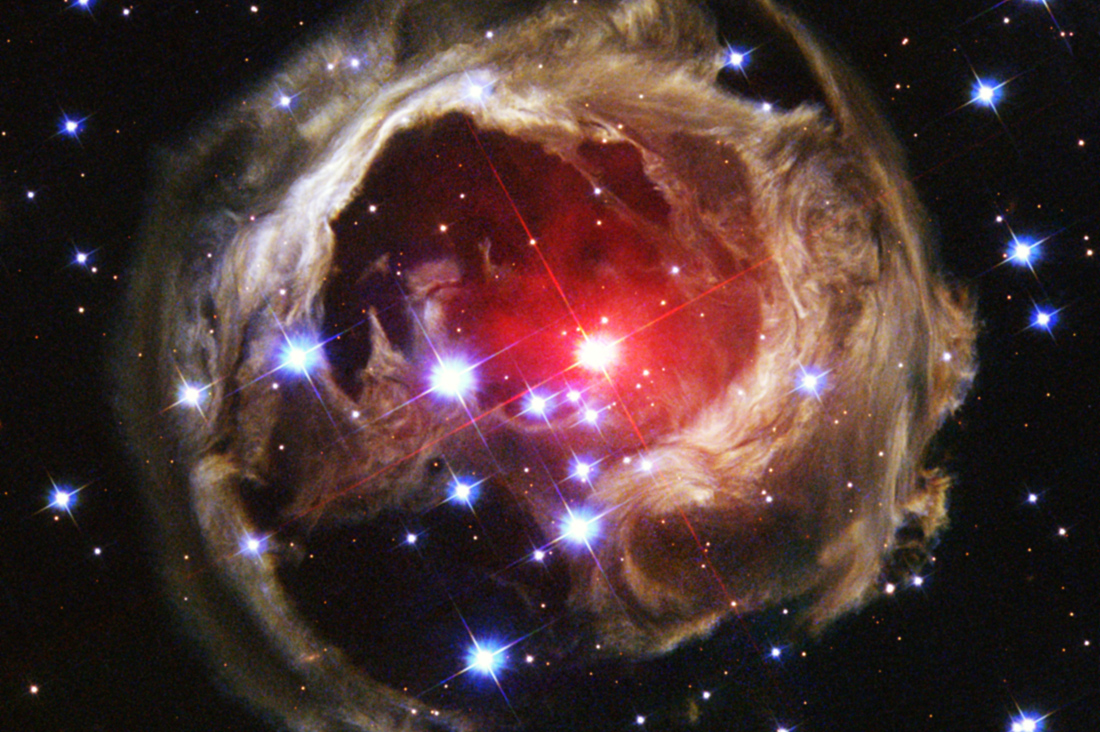
Observing the dome of the starry sky on a clear night, it is easy to believe in its inviolability and stillness, but even the ancient people noticed that not only the Sun and the Moon move in the sky. Watching night after night, the first astronomers discovered planets, which means “roving”, and that was just the beginning. In fact, the entire Universe is in motion, and only our short human age does not allow us to observe the full scope and greatness of this process. For the time being, the observation of motion in space is available to us within the Solar system, but the successes of astronomy allow us to look further.
Starlight Echo
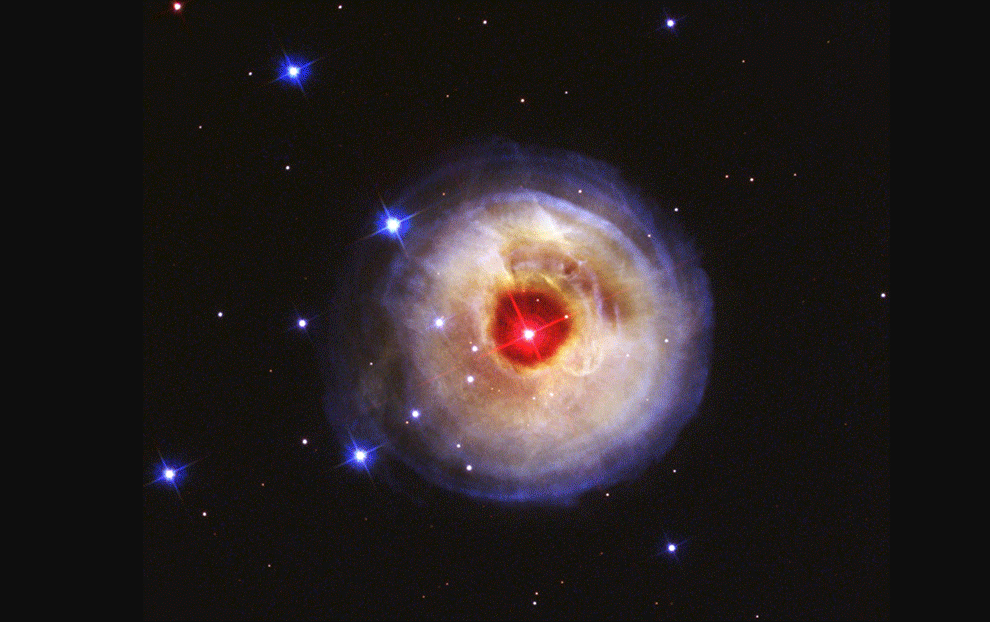
')
In January 2002, the inconspicuous variable star of our Galaxy V838 Unicorn flared and became 600 thousand times brighter than the Sun. For some time, the star became the brightest in the galaxy, but quickly went out. We witnessed an unusual phenomenon called “light echo”. Although it seems to us that a bubble of luminous gas spreads from the star, in fact we see another. This flash light leaves the star at the speed of light and illuminates the previously existing, but invisible in the dark clouds of dust. We can observe a “leisurely” procession of a light wave due to a distance of 20 thousand light years.
Supernova explosion charges gas ring
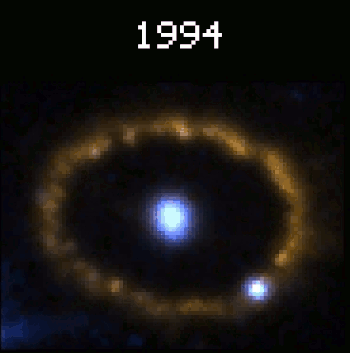
The closest, during the existence of astronomy, the 1987A supernova in the Large Magellanic Cloud exploded 30 years ago (more precisely, observations of the explosion became possible in 1987, and it exploded 170 thousand years earlier). At closer distances, for example in our galaxy, supernova explosions have not been recorded for four centuries, so 1987A is of great interest to science and is closely watched. The material of an exploded star spreads at a speed of 7 thousand km / s, and over several Earth years it reached the ring of material that encircles the star at a distance of 0.5 light year. This ring appeared much earlier - about 20 thousand years ago, when a star exploded formed by the merger of two stars. The “fall” of one star into another gave rise to the release of a substance, which turned into a “diamond necklace” when powerful streams of matter reached it from the 1987 explosion. Now the ring is already fading and should return to the old dim existence in 15-25 years.
Growing Homunculus

In 1995, 2001 and 2008, the Hubble space telescope observed the Gomunkul reflection nebula around the Eta Carina star. The explosion that gave rise to the nebula occurred in 1841 (excluding 7500 years before the star), and since then has been the subject of observations. Given the small age of the nebula, it remains possible to see its actual growth.
Foreign solar system, full face
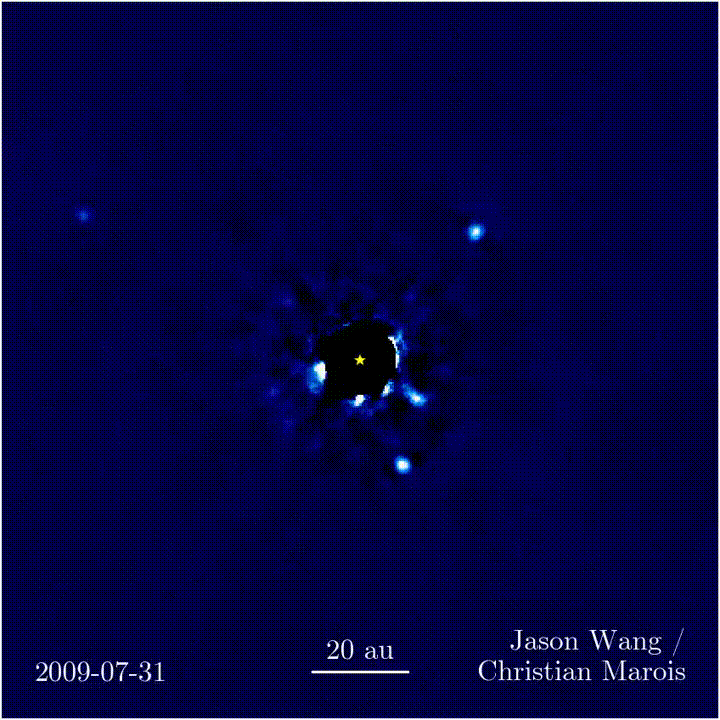
Seeing the planets in alien solar systems is not an easy task . The problem is the brightness of the star around which the planets revolve. The planets themselves practically do not radiate, but only reflect the light, therefore they are very dim and their own sun illuminates our telescopes. Chances rise if the planets are gas giants like Jupiter or even more. It also helps if the planet rotates far enough away from its star. And the observation capabilities of alien planets are improved with modern telescopes, such as Keck, and data processing algorithms. Result : visible rotation of the planetary system of the star HR 8799 Pegasus from a distance of 129 years old. Each of the planets is larger than Jupiter, and farther from the star. The closest one describes the annual circle for 40 Earth years, the distant one - for four hundred. We see the result of observations over seven years.
Space robbery live
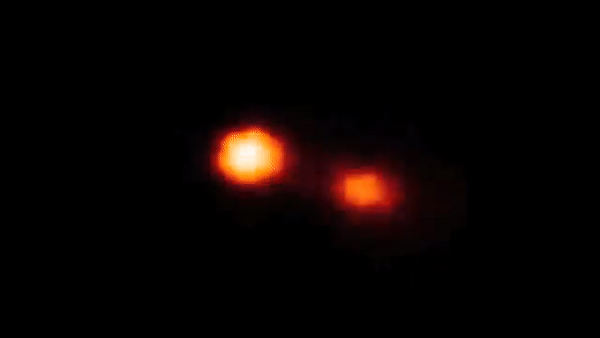
The eclipsing double star Sheliak (Beta Lyra) demonstrates the interaction of a close system of two stars. Moreover, at present there is a process of overflowing of matter from one to another. The donor star, weighing three solar, looks brighter and has an elongated shape due to tidal deformations. The robber star has a mass of 13 solar. The intensity of matter flowing from one to another is approximately one mass of the Sun every 50 thousand years. The circulation period of the system is 13 days, the distance to the pair is 960 light years.
Pulsar in the Sails

Neutron star in the constellation Sails (Vela Pulsar) from a distance of about 1 thousand light years from Earth. It is a bright source of pulsations in the optical, X-ray, gamma and radio bands of electromagnetic radiation. It appeared about 11 thousand years ago as a result of a second type supernova explosion.
The pulsar has a diameter of approximately 20 km (would fit within the Moscow Ring Road) and rotates at a speed of 11 revolutions per second. A series of 8 images from June to September 2008 from the Chandra space X-ray telescope made it possible to look into the depths of the gas-dust nebula, and examine the pulsar's jet. A jet is a stream of high-energy particles ejected from polar regions of a neutron star. The flow velocity in the jet reaches half the speed of light and extends to half a light year. The frequency of the "beat" of the jet has three periods of 122, 73, and 91 days, which can be explained by the precession of the pulsar.
Flying Neighbor
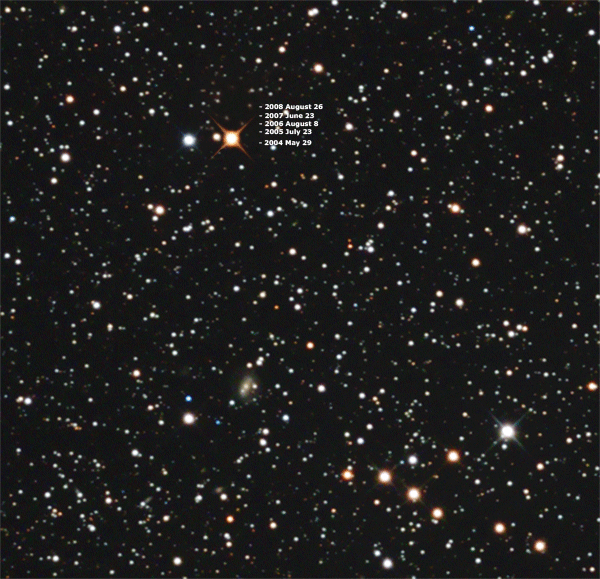
Barnard's star is one of the closest to us (a distance of less than 6 light-years), but it is more interesting because it quickly, by starry standards, moves in the earth’s sky. For the viewers of the Earth, this is the “fastest” star after the Sun. She would have crossed the disk of the moon in 174 years; nevertheless, even amateur astronomers are able to record its movement relative to other stars over several years.
Once the Star of Barnard attracted the attention of astronomers as the owner of the nearest exoplanets. To achieve them, they even offered a separate project of a starship, but long-term observations did not allow revealing any significant satellite of the star, so now it has appeared in the span and is interesting only for amateurs.
Heartbeat of the Milky Way
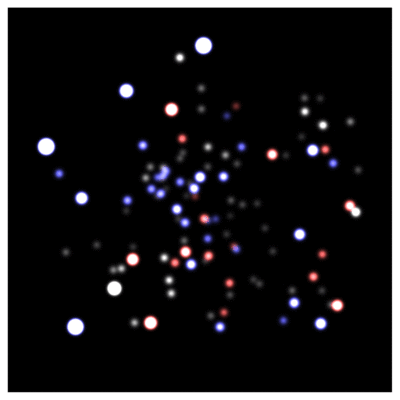
Just thirty years ago, the existence of a supermassive black hole in the center of the Milky Way galaxy was not obvious. The hypotheses of a simple star cluster were considered. To confirm the presence of a black hole in the center of the Galaxy (at least an object that meets all of its characteristics) allowed progress in optics. The development of adaptive optics and the observation of the galactic center in infrared waves made it possible to see the actual motion of stars around an invisible central object. Although it does not emit light at all, it is also a bright source of radio waves known as Sagittarius_A * (Sagittarius A *).
Studying the orbits of nearby stars, it was possible to estimate the mass and dimensions of the object: about 4 million masses of the Sun, enclosed in a diameter comparable to that of Pluto. Currently, Sagittarius A * is one of the most convincing experimental evidence for the existence of black holes.
The above animation shows the result of astrometric and spectrometric observations from 1992 to 2008. Blue stars - young, red - old.
Actual observations are not so visual, but in their own picturesque:
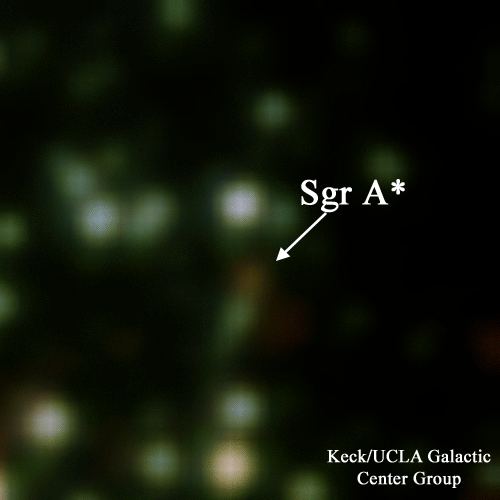
Source: https://habr.com/ru/post/401387/
All Articles